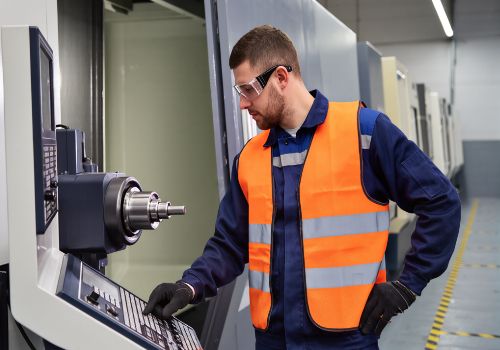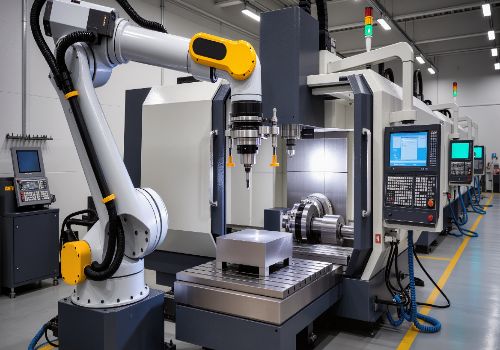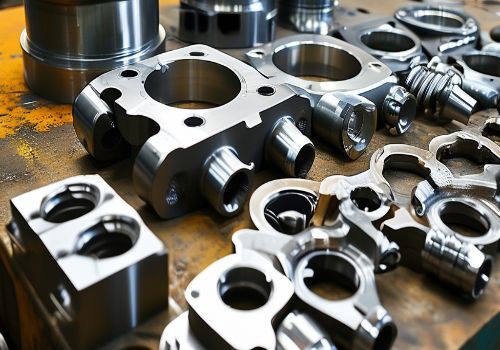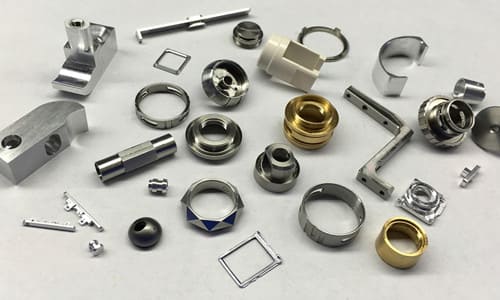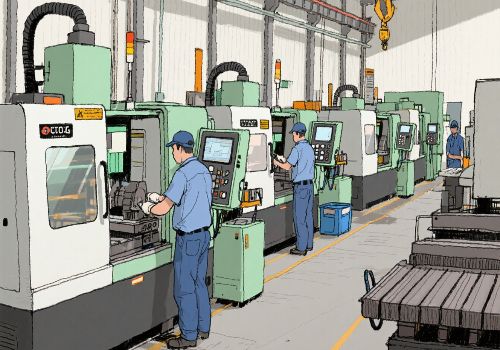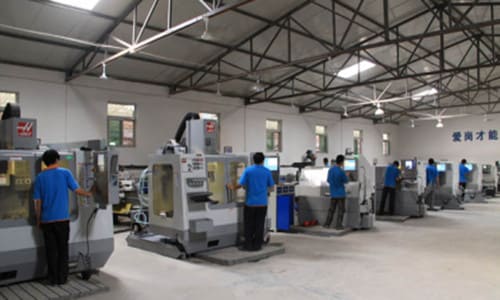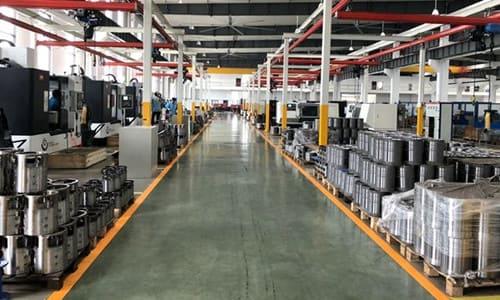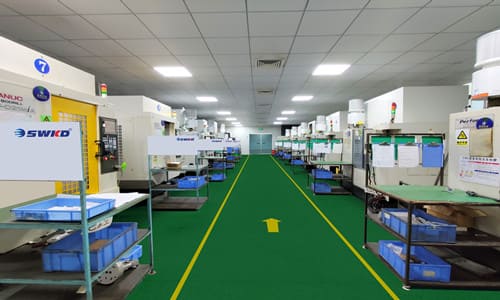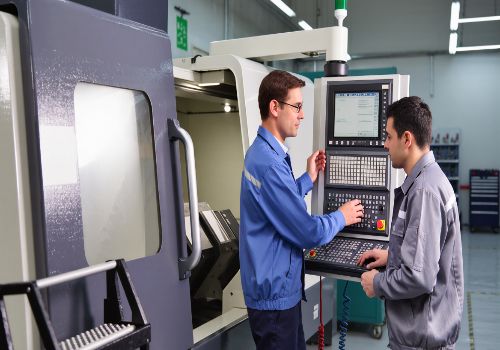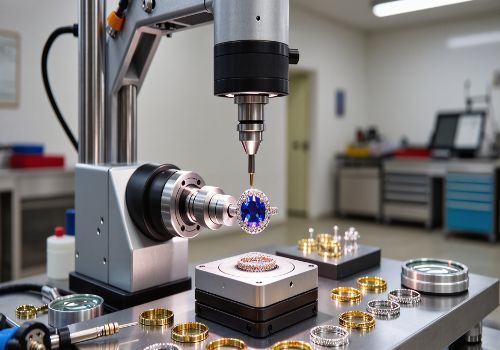Introduction
The CNC machining industry is experiencing unprecedented competition, with the global market projected to reach $115.9 billion by 2026. Shops that thrived for decades now face pressure from overseas suppliers, technological disruption, and rising customer expectations. Yet, forward-thinking machine shops are discovering that competitiveness isn’t just about price—it’s about delivering unique value through innovation, efficiency, and specialization.
This comprehensive guide reveals how successful CNC shops are adapting to stay ahead in an increasingly crowded marketplace.
The Current Competitive Landscape
-
Globalization: Overseas competition with 30-50% lower labor costs
-
Technology Gap: Automated shops produce parts 5x faster than traditional operations
-
Skill Shortage: 2.4 million manufacturing jobs may go unfilled by 2028
-
Customer Demands: 67% expect same-day quoting and faster delivery
10 Strategies to Stay Competitive
1. Embrace Smart Factory Technologies
Implementation:
-
IoT sensors for real-time machine monitoring
-
Predictive maintenance to reduce downtime by up to 50%
-
Automated pallet systems for lights-out manufacturing
ROI Example:
Midwest machine shop reduced setup time by 70% with automated workholding, increasing monthly capacity by $85,000.
2. Develop Specialized Niches
High-Value Specializations:
-
Medical device components (21% higher margins)
-
Aerospace composites machining
-
EV battery enclosure manufacturing
-
Defense contract work
Case Study:
Texas shop focusing solely on titanium aerospace brackets achieved 35% profit margins vs. 15% in general machining.
3. Implement Lean Manufacturing Principles
Key Techniques:
-
5S workplace organization
-
Value stream mapping to eliminate waste
-
Kanban systems for inventory control
-
Single-minute exchange of die (SMED)
Results: Typical lean implementations yield:
-
40-70% reduction in lead times
-
25-55% increase in productivity
-
50-90% reduction in inventory
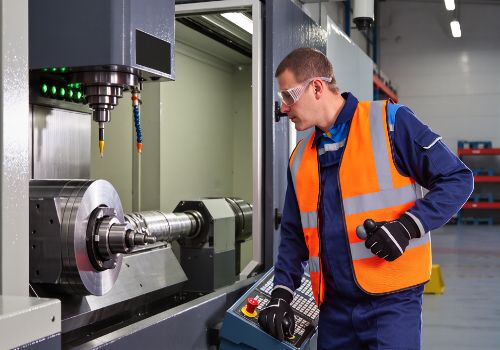
4. Invest in Employee Development
Strategic Approach:
-
Apprenticeship programs with local technical colleges
-
Cross-training for flexible workforce deployment
-
Upskilling in CAD/CAM programming and metrology
-
Performance incentives tied to efficiency metrics
Impact: Companies with formal training programs report 24% higher profit margins.
5. Adopt Advanced Business Software
Essential Systems:
-
ERP integration for seamless quoting to shipping
-
AI-powered quoting engines (5-minute response times)
-
Cloud-based collaboration with customers
-
Real-time production tracking
Data Point: Shops with integrated ERP systems experience 18% lower operational costs.
6. Enhance Customer Experience
Competitive Differentiators:
-
24/7 quote turnaround with automated systems
-
Online order tracking portal access
-
Design for manufacturability (DFM) feedback within quotes
-
Proactive communication throughout production
Result: 89% of buyers pay premium for superior customer experience.
7. Pursue Quality Certifications
Most Valuable Certifications:
-
AS9100 (Aerospace)
-
ISO 13485 (Medical Devices)
-
ITAR Compliance (Defense)
-
NADCAP (Special Processes)
Benefit: Certified shops command 15-30% price premiums.

8. Implement Sustainable Practices
Cost-Saving Eco-Initiatives:
-
Chip recycling systems (additional 3-5% revenue)
-
Energy-efficient equipment (30-40% energy reduction)
-
Coolant recycling (90% reduction in fluid costs)
-
Solar power installation (25%+ energy independence)
Market Advantage: 73% of industrial buyers prefer environmentally responsible suppliers.
9. Develop Strategic Partnerships
Collaboration Models:
-
Complementary service partnerships (heat treating, plating)
-
Supplier consortiums for material purchasing power
-
Technology partnerships with equipment manufacturers
-
Industry cluster participation for shared resources
Example: Ohio manufacturing collective reduced material costs by 18% through group purchasing.
10. Focus on Data-Driven Decision Making
Key Metrics to Track:
-
Overall Equipment Effectiveness (OEE)
-
First-pass yield rates
-
On-time delivery performance
-
Cost per part hour
Impact: Data-driven shops are 3x more likely to exceed financial goals.
Technology Investment Priority Matrix
| Investment | Cost | Impact | Implementation Time | Priority |
|---|---|---|---|---|
| Machine Monitoring | Low | High | 1-3 months | ⭐⭐⭐⭐⭐ |
| CAM Software Upgrade | Medium | High | 2-4 months | ⭐⭐⭐⭐⭐ |
| Automated Quality Control | High | High | 4-6 months | ⭐⭐⭐⭐ |
| Robotic Loading | High | Medium | 6-12 months | ⭐⭐⭐ |
| Additive Hybrid | High | Medium | 12+ months | ⭐⭐ |
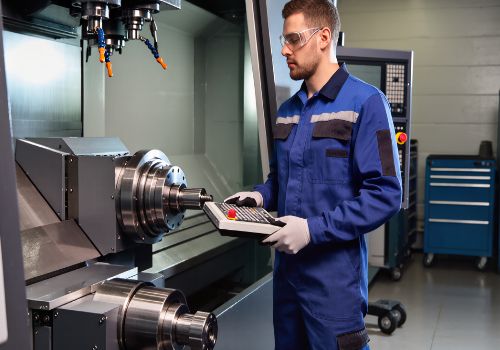
Case Study: Precision Components Inc.
Challenge: Family-owned shop facing 40% revenue decline from overseas competition
Solutions Implemented:
-
Niche specialization in medical implant prototypes
-
Digital transformation with cloud-based quoting system
-
Employee cross-training program
-
Lean manufacturing implementation
12-Month Results:
-
📈 Revenue increase: 65%
-
💰 Profit margin improvement: 22% to 35%
-
⏱️ Lead time reduction: 3 weeks to 5 days
-
🌱 New customer acquisition: 48 companies
Budget-Friendly Competitive Strategies
For shops with limited capital:
Immediate Actions (Under $5,000)
-
Website modernization with online quoting capability
-
Social media presence on LinkedIn and industry forums
-
Employee suggestion program with small incentives
-
5S implementation for workplace organization
Medium-Term Investments ($5,000-$50,000)
-
Machine monitoring system installation
-
CAM software upgrades
-
Employee certification programs
-
Targeted marketing to niche industries
Future-Proofing Your CNC Business
Emerging Technologies to Watch
-
AI-powered predictive maintenance
-
Digital twin technology
-
Blockchain for supply chain transparency
-
Augmented reality for training and maintenance
Market Trends to Capitalize On
-
Reshoring initiatives (68% of manufacturers planning)
-
Electric vehicle component demand
-
Customized medical implants
-
Sustainable manufacturing requirements
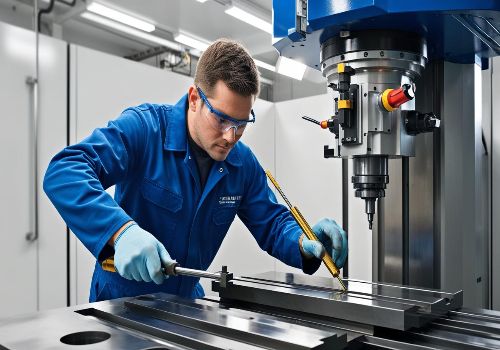
Conclusion
Staying competitive in today’s CNC machining industry requires a multifaceted approach that balances technological investment with human capital development. The most successful shops aren’t necessarily the largest or cheapest—they’re the most adaptive, specialized, and customer-focused.
By implementing even 3-4 of these strategies, machine shops can differentiate themselves, command premium pricing, and build sustainable businesses capable of weathering economic shifts and technological disruption.
Ready to transform your competitive position? Contact with our manufacturing experts.

